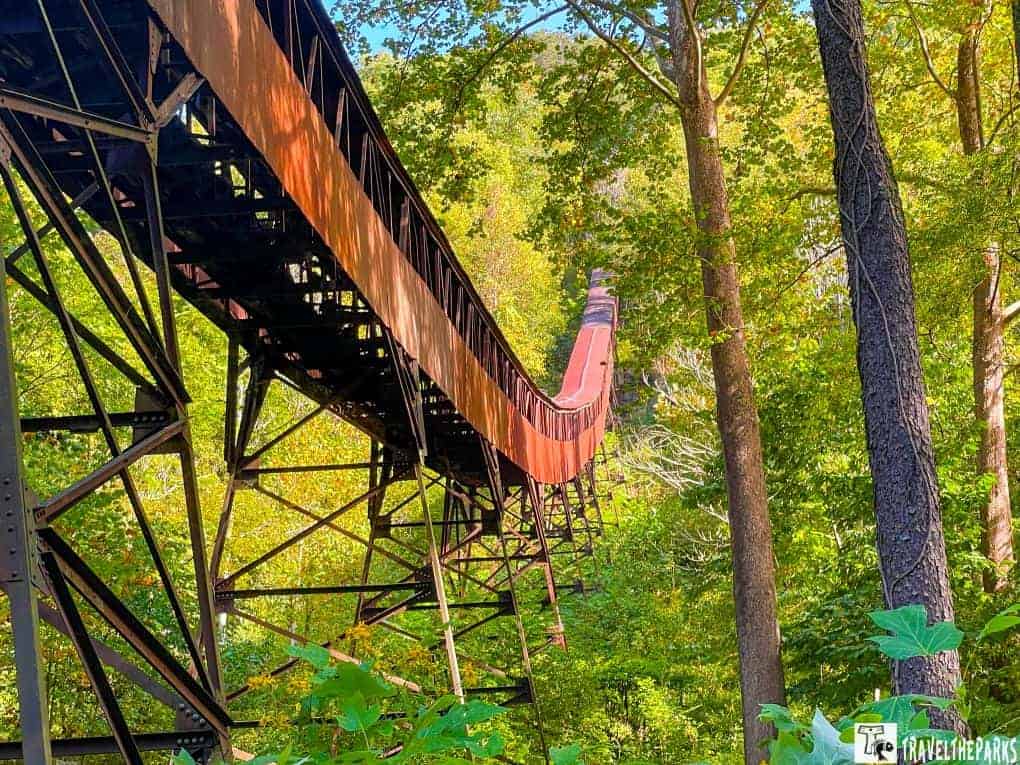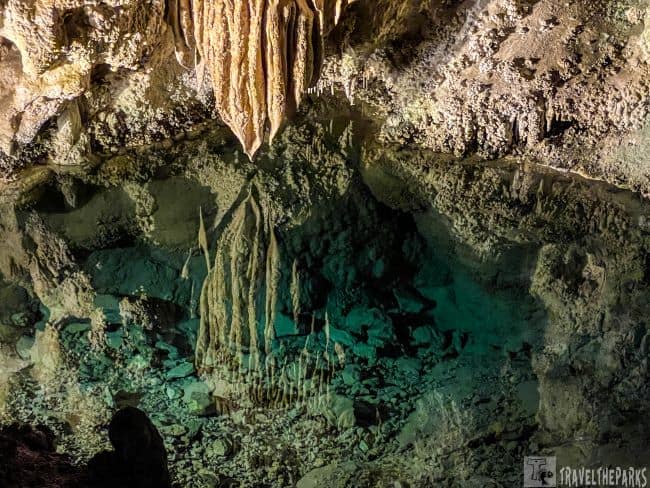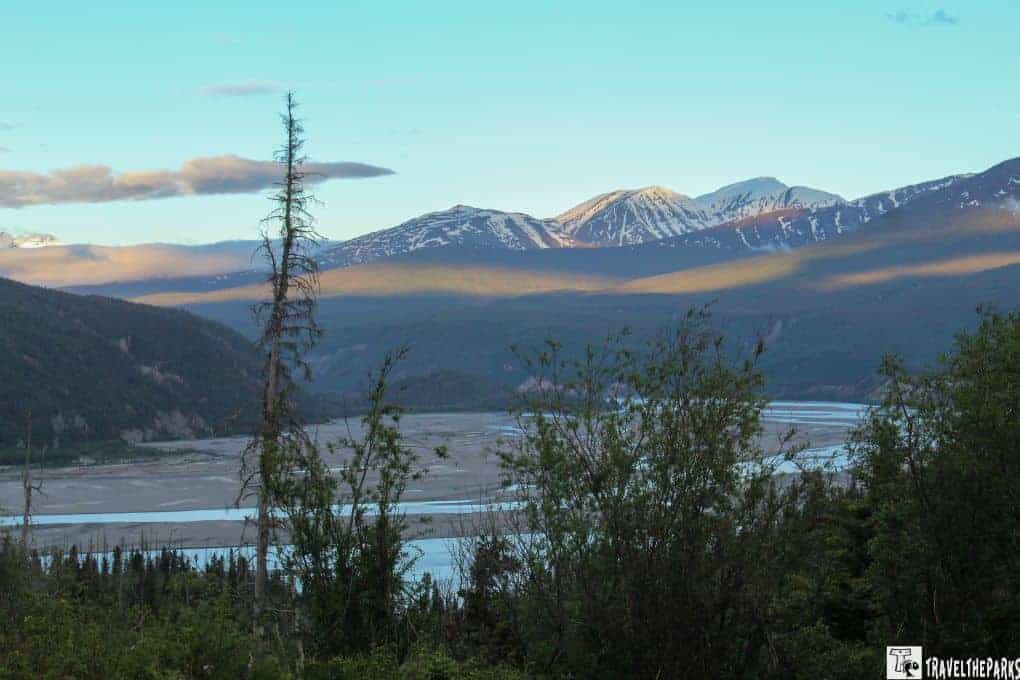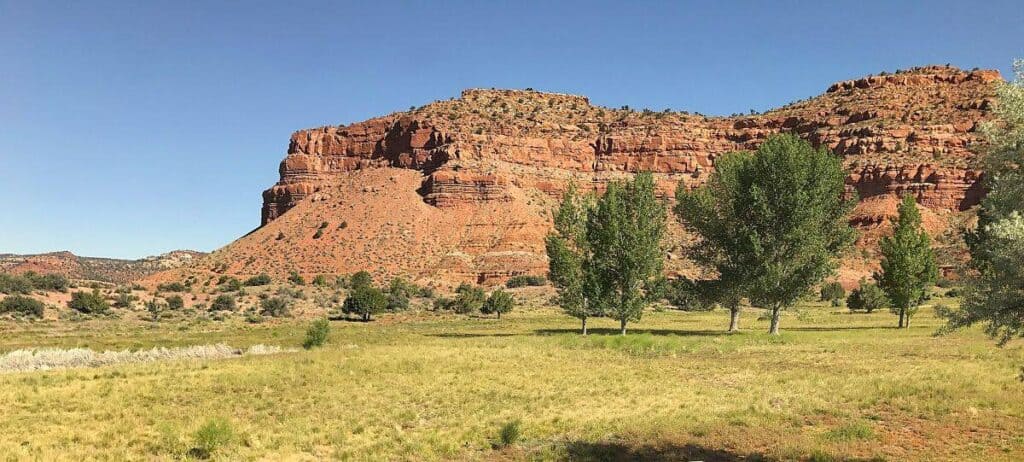Have you ever come across a hidden treasure – a location that seems unchanged by the passage of time? You can find Nuttallburg in New River Gorge National Park and Preserve in West Virginia, and it is exactly that kind of location. It is an intriguing village rich in history, providing a special combination of natural attractiveness and cultural importance. Nuttallburg is a historical coal mining site that showcases the importance of coal mining in the region from the late 1800s to the early 1900s. It is mysterious walking the tipple and other industrial buildings that whispers tales of coal-mining families who toiled and flourished amidst these rugged mountains in Appalachia. New River Gorge National Park preserves a handful of old mining towns to help remember and safeguard the industry’s legacy.
This post may contain affiliate links, meaning if you purchase something through one of these links, we may earn a small commission at no extra cost to you! Read the full disclosure policy here.

Table of Contents
How to Get To the Nuttallburg Historic Mine
Reaching Nuttallburg is an adventure in itself. From Highway 19, take the exit for northbound Highway 60. Turn left onto eastbound Highway 60 and drive 4 miles to Lansing Edmond Road (Route 82). Turn right onto Lansing Edmond Road and continue to the junction with Keeneys Creek Road. Proceed straight onto Keeneys Creek Road (Route 85/2) and drive 4.1 miles to the parking area at the Nuttallburg Historic Site.
PRO Tip: The gravel Keeneys Creek Road leading to Nuttallburg is narrow, winding, and steep, with only one lane in most sections. Drivers should be prepared to cooperate and pull over when necessary, as pull-off areas are limited. We recommend vehicles with moderate clearance. There is no cell reception at the site.
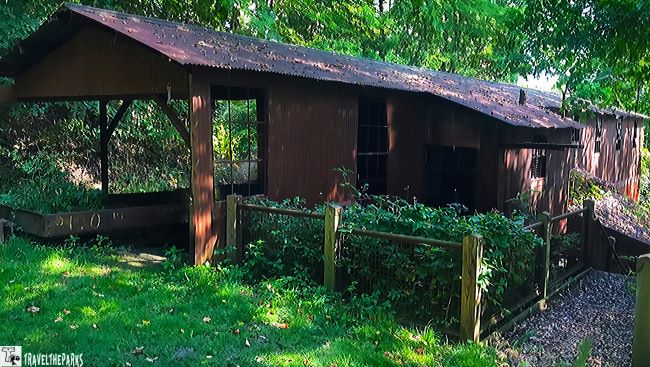
HeadHouse Trail: From US 19 in Lansing, just north of the Canyon Rim Visitor Center, turn onto Lansing-Edmond Road (CO 5/82). Proceed 2.5 miles, then turn right onto Beauty Mountain Road (CO 85/5). After 0.1 miles, turn right onto the road immediately past Nuttall Cemetery Road. The small parking area is next to the gate, which marks the start of the Headhouse Trail. Be prepared for a short hike from the parking area down to the mine site; the trail is moderately steep, but the views are worthwhile.

How the Nuttallburg Mine Shaped the New River Gorge
John Nuttall arrived in 1870 to investigate mining opportunities. He discovered that the Chesapeake & Ohio Railroad was planning to construct their railroad right through the heart of the rugged gorge. Recognizing the high value of the coal in the area, he noted this coal possessed an exceptionally high carbon content, making it an incredibly clean-burning and nearly smokeless. Such a prized commodity was sure to be in high demand, and Nuttall wasted no time in securing the land purchase along Kenny Creek. Because bituminous coal was smokeless and burned hotter, the US Navy used it to fuel its mighty fleet of warships.. This coal soon became an essential backbone of the region’s economic growth.

Modernization of Nuttallburg: The Henry Ford Era in New River Gorge
In 1920, automobile magnate Henry Ford captured national headlines. He acquired the Nuttallburg mines, aiming to dominate every facet of production for his River Rouge Auto Plant in Dearborn, Michigan. At the site, Ford introduced innovative engineering techniques. This included a conveyor system known as “button and rope,” and upgraded it with some of the most advanced technology available at the time. However, he faced challenges in controlling and purchasing the railroads that transported his coal. Despite Ford’s innovations, his venture at Nuttallburg ultimately failed. Ultimately, leading him to sell his interests there to the Maryland New River Coal Company in 1928, eight years after establishing the operation.

Preservation Efforts: Nuttallburg a part of New River Gorge National Park
Inevitably, with the decline of coal and passing through three different owners, the mine was finally closed in 1958. Mine structures fell into decay, buildings collapsed, leaving only their stone foundations behind. The National Park Service purchased the land in 1998. In 2005 it was listed on the National Historic Registry. It was during this time that NPS architect Richard Seegars used federal grants to begin a three-phase program. He was looking to restore this site. Completed in 2011, the restored coal mine and town of Nuttallburg opened to the public.

Discover the Historic Ruins of Nuttallburg, New River Gorge
A forest of trees and vines steadily reclaims the vanishing town. As we wander the overgrown paths and crumbling structures, the ghosts of the past seem to linger.The echoes of backbreaking labor, the rumbling of machinery, and the ever-present dangers permeated the miners’ daily lives. After the hair-raising drive into the site, we took a great deal of time to roam the ruins. Interpretive signs provide context and history, helping piece together the story of Nuttallburg and its significance.

Town Loop Trail A Self-Guided Tour of Nuttallburg Historic Mine
Exploring the old mining ruins was such a fascinating experience! We wandered around the Town Loop Trail, the Headhouse Trail and the Seldom Seen Trail for about 3-4 hours taking in all the history and beauty around us. It was so peaceful to walk at our own pace. The weather was perfect, and we really enjoyed learning about the mining history of the region.

The Crown Jewel of Nuttallburg: The Coal “Tipple”
The imposing 1,385-foot-long conveyor, or “tipple,” is the most prominent and striking remnant of the once-thriving industrial town of Nuttallburg. This colossal piece of mining infrastructure was the centerpiece of the town’s coal operations. As we approached the abandoned town, the towering tipple was the first thing that came into view. It dominates the surrounding landscape as a rugged survivor.

The sheer scale of this network of chutes, hoppers, and conveyor belts was captivating. Built in 1926, this massive gravity-powered system could transport an impressive 125 tons of coal per hour from the mine. Beginning its journey, an incredible 600 feet above the valley floor. It was interesting to see the meticulous sorting and preparation of the coal before loading it onto the waiting rail cars.

The Massive Nuttallburg Coke Ovens: Hidden in Plain Sight
The remnants of the town’s 80 coke ovens which were used to transform raw coal into the refined coke. Today, you can still see the remnants of the town’s 80 coke ovens, which fueled the region’s industrial furnaces. These beehive-shaped brick structures were the heart of a coal-to-coke transformation process. They operated continuously, keeping the local iron, steel, and manufacturing industries running.

In this process, workers would shovel raw bituminous coal into the oven’s airtight chambers. Here, the operators would slowly bake the raw bituminous coal at high temperatures over several days. This process drove off impurities and gases, leaving behind a hard, porous material known as coke.

The backbreaking work in the eerie glow of the furnaces must have been grueling for the workers. I can vividly imagine as they toiled, exposed to the toxic fumes, their blackened, soot-stained faces and strained lungs.

Company Housing for the Workers at Nuttallburg
At the height of its prosperity in 1890, this tightly knit town was home to 342 residents. All of whom lived in the 110 company-owned houses that dotted the landscape. These miners and their families were entirely dependent on the lucrative coal industry that fueled Nuttallburg’s economic engine. To support the bustling population, the town boasted an impressive array of essential amenities. These included a doctor’s office, a blacksmith shop, and a company store – the sole source for essential goods and supplies for the local miners and their families.

Exploring the Nuttallburg Company Store in New River Gorge
Chief among them was the omnipresent company store. It served as the sole source for the miners and their families to obtain the goods and supplies necessary for daily life. Here, the company paid the workers in scrip – a form of company currency that they could only redeem at the store itself. This arrangement effectively trapped the miners in an economic system from which to escape. The miners found it nearly impossible to escape, as they were required to use their meager earnings for mandatory purchases that funneled right back into the company’s coffers. Nuttallburg also featured other important community hubs. This included a doctor’s office to tend to the health needs of residents, as well as a blacksmith shop to service the vital equipment used in the mines.

Divided Lives: Racial Segregation in Nuttallburg
Nuttallburg’s layout deliberately divided its white and Black residents, reflecting the racial segregation pervasive across the American South in the late 19th and early 20th centuries. This spatial separation extended to nearly every aspect of life in the town. Black community on the east side of Shorts Creek and a white community on the west side. Segregation deeply affected the education system, with separate schools established for white and Black children. While mine companies invested in elementary-level white schools to teach reading and writing, children as young as 12 were allowed to begin working in the mines.

I did find one interesting story that seemed to indicate the town was more tolerant than most. Even with the segregation of the time, his experiences in and around Nuttallburg, West Virginia shaped Carter G. Woodson’s life. As a young man of 17, Woodson came to the area with his brothers to work in the local coal mines, including the Nuttallburg Mine and the nearby Kaymoor Mine, in order to earn money for his education.

During this time, he read newspapers aloud to black miners who could not read. Woodson later returned to the region to teach in the nearby town of Winona, and it is possible he also taught at the black school in Nuttallburg itself. Woodson went on to become a groundbreaking scholar, earning a PhD from Harvard and founding both the Journal of Negro History and what is now known as Black History Month, cementing his legacy as the “Father of Black History.”

Religious institutions also mirrored this division. Churches served as vital centers of community life, yet they were segregated along racial lines.

Taylor House: Social Center
Constructed by Martha and Jackson Taylor, the daughter and son-in-law of Nuttallburg’s founder, the Taylor House stands as a significant landmark in the town’s history. Initially intended as a family home, the house’s function evolved over time, becoming a clubhouse or boarding house for white miners.


All that Remains: Seldom Seen Trail
We follow the 0.3-mile spur trail to the former town site. Seldom Seen was a small residential community that housed some families of Nuttallburg employees. This where we found scattered foundations were all are all that remain – remnants of an earlier era in the New River Gorge.

Why You Shouldn’t Underestimate the Headhouse Trail at Nuttallburg
The Headhouse Trail follows a 1.3-mile gravel road, steeped in history, leading to the upper reaches of the infamous Nuttal coal mine. You can reach the headhouse from the Town Loop Trail, though it requires a steep uphill climb from the Lower Nuttallburg Mine. We accessed the trail from the upper section, where we found the remains of old coal cars, the powerhouse, and the barred entrance to the mine.What I really liked best about this trail was the views of the gorge and the incredible rock ledges.

Planning Your Visit: What to Know Before Going to Nuttallburg
- Plan Your Visit: To make the most of your trip to Nuttallburg, consider packing a picnic to enjoy amidst the ruins. There are no facilities on-site, so bring your water and snacks.
- Best Times to Visit: The best times to visit are during the spring and fall, when the foliage is at its most vibrant and the weather is pleasant for hiking and exploration. Summer brings lush greenery, while winter offers a quiet serenity, although access may be more challenging. Winter, the road may close because of icy or snowy conditions.
- Operating Hours: The park is open 24 hours a day, year-round. Canyon Rim Visitor Center is open year-round from 9:00 a.m. to 5:00 p.m. I suggest visiting the park’s official website or contact them directly.
- Entrance Fees: An entrance pass is not required to access New River Gorge National Park & Preserve. There may, however, be charges associated with certain activities, such as whitewater rafting and the famous bridge walk.
- Be prepared: there are hiking trails and historical exhibits to explore, so be sure to bring comfortable shoes and trekking poles. In the summer bring sunscreen, bug spray and a sun hat. On a hot summer day, remember to pack some snacks and have plenty of water.

Final Thoughts: Discovering Nuttallburg: A Hidden Gem In The New River Gorge
Nuttallburg is a hidden gem waiting to be discovered in the New River Gorge. I have had this as part of my bucket list since I first began planning our visit to the New River Gorge National Park. To me, this abandoned town illustrates the boom-and-bust cycle of coal mining in Appalachia. Having explored the Kennicott and Independence mines in Alaska, visiting the Nuttallburg Mine in West Virginia gave us a very different but equally fascinating glimpse into America’s mining history.
Today, this mine now stands as a testament to the hard work and resilience of the men who toiled here. With its rich history, Nuttallburg invites you to embark on a journey to uncover the stories that linger in the shadows of this remarkable site. Whether you’re drawn by the allure of history or the call of nature, Nuttallburg promises an unforgettable experience. Though the Nuttall Mine no longer produces coal, its legacy lives on, a poignant reminder of the sacrifices and triumphs that shaped the history of the New River Gorge.
Have you ever explored Nuttallburg? What did you think? What did you like most on your visit? Share your thoughts in the comments below.

